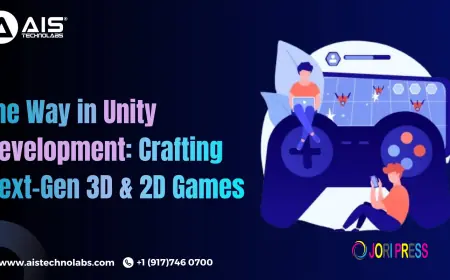Modern SIS Uncovered: Driving Real Student Success Beyond Administration
Outdated SIS holds 73% of institutions back. Upgrade to a modern Student ERP with unified lifecycle management, real-time analytics, and seamless integrations to boost student success and retention.

73% of educational institutions report that their current student information systems create more barriers than solutions in supporting student success.
That’s nearly three out of four schools struggling with technology that was meant to help them thrive.
The numbers tell a sobering story. While enrollment management has become increasingly complex, with students expecting personalized experiences and real-time support, most institutions are still operating with fragmented systems that were built for a different era.
These outdated platforms force administrators to spend countless hours on manual data entry, leave students frustrated with delayed responses, and prevent educators from accessing the insights they need to truly impact learning outcomes.
But here’s where the narrative shifts. Forward-thinking educational institutions are discovering that the right Student Information System/Student ERP isn’t just about managing data—it’s about creating an ecosystem that puts student success at its very core.
The Evolution Beyond Traditional Data Management
Traditional student information systems were designed with one primary goal: to store and organize student records. However, modern educational challenges demand far more sophisticated solutions. Today’s SIS platforms must serve as the central nervous system of an institution, connecting every touchpoint in a student’s journey.
Consider the complexity of modern student needs. They’re juggling academic requirements, financial aid processes, career planning, and personal development—often across multiple platforms. Meanwhile, administrators are trying to track performance trends, predict at-risk students, and demonstrate institutional effectiveness to stakeholders. The disconnect between these needs and legacy system capabilities creates a gap that impacts everyone involved.
Moreover, the question isn’t whether institutions need to upgrade their SIS—it’s how quickly they can implement solutions that truly serve their communities.
Key Features of a Modern Student ERP: Transforming Student Experience
Unified Student Lifecycle Management
- Unified Student View – Modern SIS platforms provide a single, comprehensive view of each student’s journey from inquiry to graduation and beyond.
- Improved Support – Advisors can instantly access details like financial aid, academic progress, upcoming deadlines, and red flags to better assist students.
- Integrated Communication – Built-in tools deliver messages through multiple channels: email, text, mobile app notifications, and portal messages.
- Higher Engagement – This multi-channel approach ensures students receive timely updates, boosting engagement and keeping them aligned with their academic goals.
Real-Time Analytics and Predictive Insights
- Actionable Insights – Modern SIS platforms don’t just collect data; they transform it into insights that drive meaningful action.
- Early Intervention – Advanced analytics identify at-risk students before they fail a course, enabling support programs that can boost retention rates by up to 15%.
- Smart Dashboards – Administrators gain access to dashboards that highlight trends and patterns across student populations.
- Data-Driven Decisions – Institutions can make informed choices on resource allocation, program effectiveness, and long-term strategic planning.
Seamless Integration Capabilities
- Central Hub – A robust SIS integrates with LMS, library databases, financial aid systems, and other specialized applications.
- Eliminates Silos – Seamless connections reduce duplicate data and the need to juggle multiple platforms.
- External Integration – Connects with state reporting systems, transfer credit databases, and employer partnership platforms.
- Connected Ecosystem – Creates a unified and streamlined educational environment for students, faculty, and administrators.
Measuring Success: Beyond Enrollment Numbers
While enrollment figures remain important, modern SIS platforms enable institutions to track more meaningful success metrics. Student engagement scores, progression through academic milestones, and post-graduation outcomes provide a more complete picture of institutional effectiveness.
A different 2024 survey showed that 78% of higher education institutions reported a positive impact on.
For instance, institutions using comprehensive SIS platforms can track how students who participate in early alert programs perform compared to those who don’t, providing concrete evidence of intervention program effectiveness. This data-driven approach to student success has helped institutions increase graduation rates while reducing time-to-degree.
In contrast to institutions still relying on manual processes and disconnected systems, those with modern SIS platforms report significant improvements in student satisfaction scores and staff productivity metrics.
Implementation Strategy for Maximum Impact
Stakeholder Engagement and Change Management
Successful SIS implementation begins long before the technology goes live. Engaging faculty, staff, and students in the selection and planning process ensures that the chosen solution addresses real needs rather than perceived ones.
However, the most critical factor in successful implementation is comprehensive change management. This includes training programs that help users understand not just how to use the new system, but why these changes will improve their daily experiences.
Data Migration and Quality Assurance
The transition from legacy systems requires meticulous planning to ensure data integrity and minimize disruption. Institutions that invest in thorough data cleaning and validation processes during migration see significantly smoother implementations and higher user adoption rates.
Therefore, partnering with experienced implementation teams who understand the complexities of educational data becomes essential for success. These experts can anticipate potential issues and develop strategies to address them proactively.
Looking Forward: The Future of Student Information Systems
As artificial intelligence and machine learning capabilities continue to advance, the next generation of SIS platforms will offer even more sophisticated predictive analytics and automated support features. Imagine systems that can automatically recommend course sequences based on career goals, identify optimal study groups based on learning styles, or flag potential financial aid opportunities before students even know to look for them.
The integration of emerging technologies like chatbots for 24/7 student support and mobile-first interfaces designed for today’s digital natives will further enhance the student experience while reducing administrative burden.
Conclusion: Your Partner in Student Success
The evidence is clear: modern Student Information Systems are no longer optional for institutions serious about student success. They’re essential tools that can transform how educational institutions operate, engage with students, and demonstrate their impact.
The right SIS platform doesn’t just manage information—it creates opportunities for meaningful connections between students and their educational goals. By providing real-time insights, seamless integrations, and user-friendly interfaces, these systems empower both students and administrators to focus on what matters most: learning and growth.
Ready to discover how a modern SIS can transform your institution’s approach to student success? Our education technology experts are standing by to show you exactly how our comprehensive ERP solution can address your unique challenges and unlock your institution’s potential. Book a quick demo and see the difference that truly integrated student information systems can make for your community.
Don’t let outdated technology hold your students back from achieving their dreams.
What's Your Reaction?
 Like
0
Like
0
 Dislike
0
Dislike
0
 Love
0
Love
0
 Funny
0
Funny
0
 Angry
0
Angry
0
 Sad
0
Sad
0
 Wow
0
Wow
0
















































